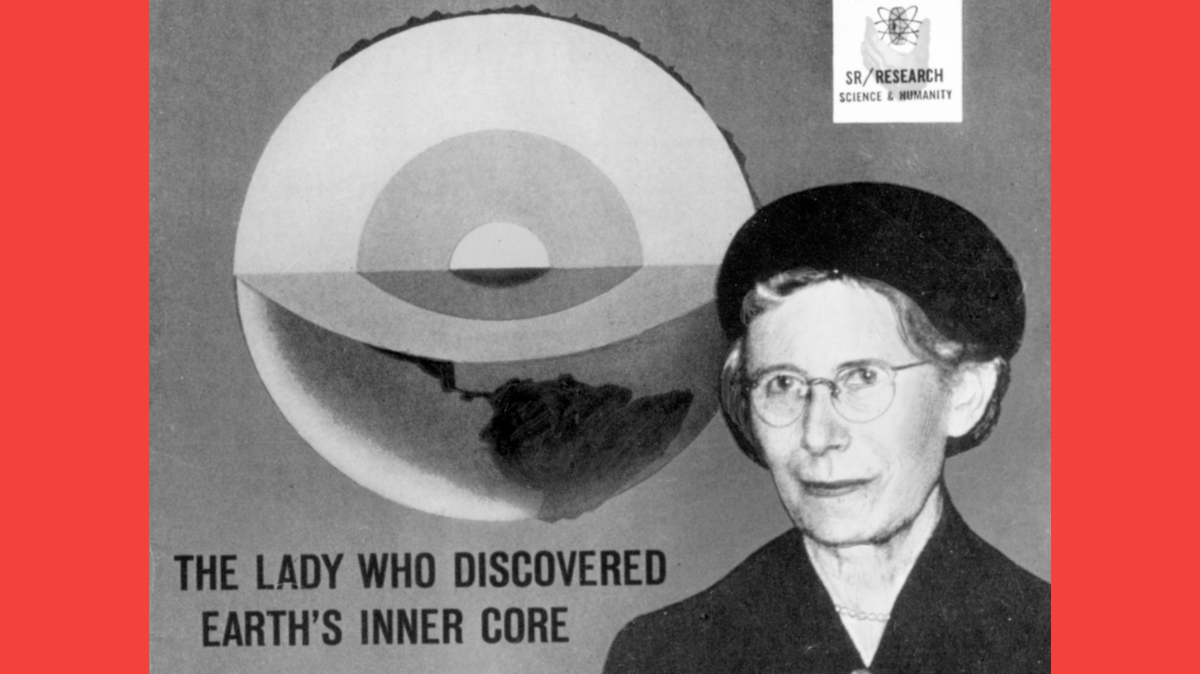What’s going on in the core of the earth? 11 amazing facts about the interior of the earth
Did you know that people in the Middle Ages didn’t even think that the earth was flat? This misconception comes from the mix of Victorian anti-religious propaganda and a misinterpretation of stylized maps of the period. You’re welcome! Here are 11 more facts about the Earth’s core – but just the basics for understanding:
Contents
- 1 What does the core of the earth look like?
- 2 How do we know things about the Earth’s core?
- 3 From conspiracy ideologies to pole shifts: 11 facts about the interior of the earth
- 3.1 1. A scientist inspired Jules Verne’s theory of an inhabited core.
- 3.2 2. In 1798 the earth was weighed. So to say. With math.
- 3.3 3. The core of the earth is closer than Cairo.
- 3.4 4. The core of the earth is larger than Mercury.
- 3.5 5. The core of the earth rotates independently of the rest of the planet.
- 3.6 Editor’s Recommendations
- 3.7 6. The Earth’s core saves our atmosphere.
- 3.8 7. The core halves alternately melt and grow.
- 3.9 Editor’s Recommendations
- 3.10 8. The core of the earth has swapped north and south poles. Several times.
- 3.11 9. In the interior of the earth there is snow.
- 3.12 10. Recycling keeps us warm.
- 3.13 11. The inner core has an inner core.
- 3.14 Here are beautiful pictures of our planet:
- 3.15 Don’t miss any news! 💌
- 3.16 Almost finished!
What does the core of the earth look like?
The earth is basically divided into three parts: The crust on which we walk is up to 75 kilometers thick. After that comes the mantle, which extends to a depth of 2,900 kilometers. The core of the earth has a radius of 3,500 kilometers. The core in turn is divided into the inner and the outer core.
The inner core is a nickel-iron sphere with a temperature of around 5,400 degrees Celsius, comparable to the sun’s surface. All around is the outer core, which also consists largely of nickel and iron, but in liquid form. It is similarly hot, although it cools down slightly on the outside.
It’s very hot, it’s liquid – no one can go down there and see. So how do we know things about the Earth’s core? The science for this is seismology, which also studies earthquakes. After an earthquake, seismic waves travel through the Earth’s body, changing shape and direction depending on the materials they are penetrating. This enabled geophysicists to draw conclusions as to what the Earth’s core must look like. The inner core of the earth was discovered in 1936 by the Danish seismologist Inge Lehmann.
Already in ancient Greece was the opinion prevailingthat the core of the planet must be solid, air cannot be in the interior of the earth. However, it was believed that the earth consisted of four elemental spheres: earth, water, air and fire.
Curtain up for astronomer Edmond Halley, 1692: He theorized that a luminous gas exists beneath the earth’s crust, in which are in turn two concentric shells with a core the size of Mercury. He wanted to explain inexplicable compass readings. This made him the only person in academia who really considered the idea. Pseudo-science and conspiracy ideologies still like to take up the hollow earth and inhabited caves in the earth’s core.
Henry Cavendish was the scientist who cleaned up Halley’s theory. He used a torsion balance: he could use it to measure the twisting force caused by the attraction that two large balls exerted on two small ones. This enabled Cavendish to calculate the force of attraction between the pairs of balls. By comparing it to the Earth’s gravitational pull, he was able to calculate its density – and since its size was already known, its weight as well. By that weight it was clear: Earth must be mostly solid materials, and glowing gas with an inhabited core is nonsense.
To clarify: The core of the earth begins at a depth of 2,900 kilometers. If we calculate from the t3n editorial team in Hanover, then the earth’s core is closer than Cairo. The city is 3,039 kilometers away as the crow flies.
With a diameter of 6,942 kilometers, the entire core of the earth is significantly larger than the planet Mercury. He has one diameter of 4,880 kilometers.
Because of the liquid envelope, the Earth’s core can rotate independently of the planet’s exterior. Actually, the core of the earth rotated faster than the rest of the planet – but it did probably over the past decade its movement has slowed. There are also theoriesthat a so-called superrotation occurs in certain periods. One other thesis: There is no superrotation, the measurements are caused by physical changes on the surface of the inner core.
Editor’s Recommendations
The two parts of the earth’s core create a magnetic field. This magnetic field, in turn, protects our atmosphere: The solar wind, a continuous stream of charged particles that the sun ejects at a speed of 403.3 kilometers per second, would destroy our atmosphere without a magnetic field.
The eastern and western halves of the Earth’s core alternate between melting and growing. Geoscientists suspect this based on paleomagnetic data. That could be the reason why the Earth’s axis is tilted. This would be anchored in the growing half.
Editor’s Recommendations
It is last 770,000 years ago happens: a pole shift. The magnetic poles are tilted – the north pole became the south pole and vice versa. Researchers see two possible reasons: The first is the two alternately growing halves of the core, which may also have shifted the Earth’s axis from a western to an eastern tilt. The other possibility is oxygen, sulfur and silicon being squeezed out of the Earth’s inner core and rising to the core-mantle interface. There they form hot mud dunes. When such a dune crashes against the mantle, it stimulates convection and disrupts the magnetic field.
Researchers were irritated by anomalies in seismic measurements because they showed deviations in density and velocity. The solution to the riddle: As mentioned above, particles rise – in the form of silicon-rich snow. The silicon snow rising towards the mantle causes currents that distort the sound waves.
The slow movement of plate tectonics pulls the earth’s crust into the interior of the earth – including plants and living beings. They are locked inside and cooked. The organic material resurfaces in lava and volcanic gases—including warming carbon dioxide. Without the interaction of recycling and the magnetic field, the earth would not have a livable temperature.
More seismic waves, more insights: In a study, two researchers have provided further evidence for the thesis that the inner core has an inner core. In the iron-nickel sphere there is a “metal ball” with a diameter of 650 kilometers. The crystallized structure and arrangement of atoms in the innermost core of the Earth differ from that of the surrounding sphere.
16 breathtaking images of the earth from space



